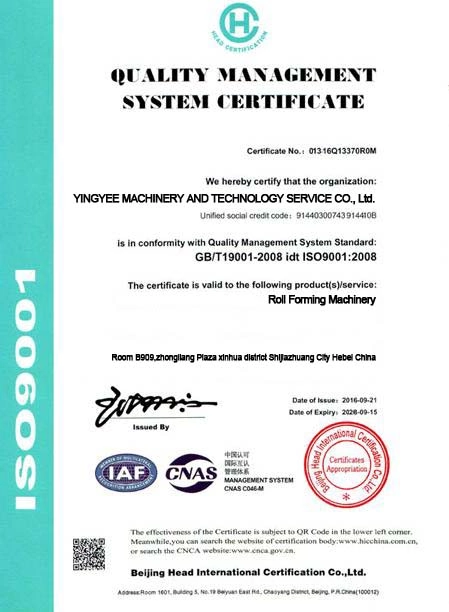
Stud and Track Keel Roll Forming An Overview
Roll forming is a continuous bending operation that transforms a long strip of metal into a specific cross-sectional profile. Among the various applications of this process, the production of stud and track systems for framing in the construction industry stands out due to its efficiency and the strength of the resultant structures. This article explores the significance of stud and track keel roll forming and its advantages in modern construction.
Studs and tracks are integral components of non-load-bearing wall systems, commonly used in residential and commercial building projects. Studs serve as vertical supports, while tracks function as the horizontal framing members that hold everything in place. The design of these components can greatly impact the stability and durability of a building, making the choice of manufacturing method crucial.
One of the primary advantages of roll forming, particularly for producing stud and track systems, is its ability to create lightweight yet strong profiles. The process involves feeding a coil of metal through a series of rollers, which gradually shape the metal into the desired configuration. This method minimizes waste as it allows for continuous production with minimal offcuts, making it a cost-effective option for manufacturers.
Moreover, the precision achieved in roll forming ensures that the studs and tracks maintain uniform dimensions, which is vital for assembly and structural integrity. Consistency in size reduces construction errors and improves the ease of installation, as builders can trust that each component will fit together seamlessly. The roll forming process also allows for various metal thicknesses and materials, providing flexibility to suit different construction requirements.

In addition to manufacturing efficiency and precision, stud and track keel roll forming offers enhanced strength characteristics
. Steel, being a commonly used material, provides excellent resistance to both compression and tension, ensuring that walls constructed from these components can withstand lateral forces, such as those from wind and seismic activity. Furthermore, the galvanized finish often applied to steel studs helps protect against corrosion, extending the lifespan of the framing system.Another key benefit of using stud and track systems is their design adaptability. The roll forming process can be easily adjusted to create custom profiles tailored to specific building designs. This versatility is especially valuable in modern architecture, where innovative and unique wall configurations are increasingly common.
Sustainability is also an essential factor in contemporary construction practices. The use of roll forming for stud and track manufacturing contributes positively to this aspect, as the process generates less scrap material compared to traditional shaping methods. Additionally, steel is a highly recyclable material, making stud and track systems an environmentally friendly choice.
In conclusion, stud and track keel roll forming represents a superior method for producing essential components in construction. Its advantages, including efficiency, precision, strength, adaptability, and sustainability, make it a preferred choice for architects and builders alike. As the demand for innovative construction solutions continues to rise, the role of roll forming in creating efficient framing systems will undoubtedly grow, further solidifying its place in the future of building design.